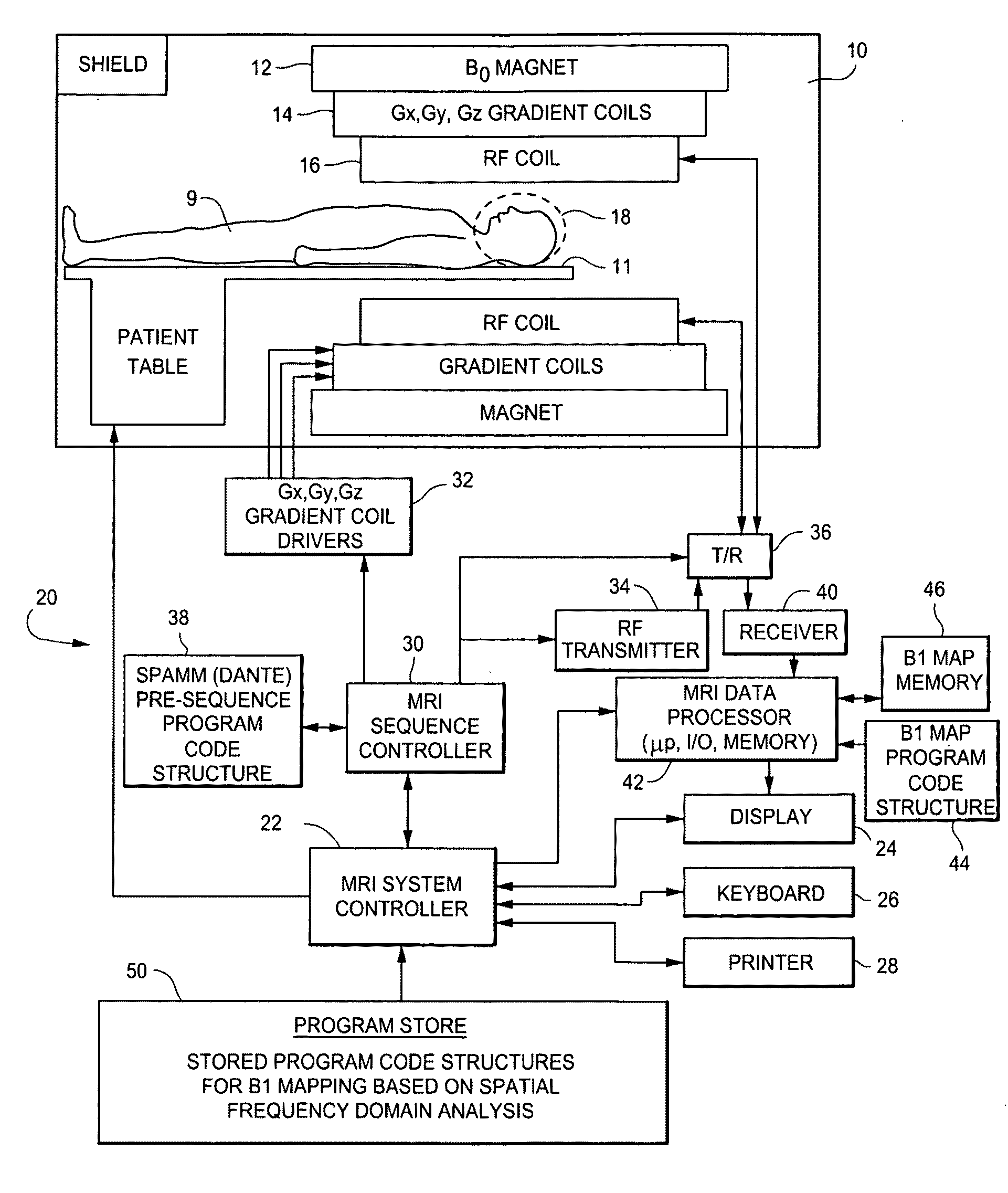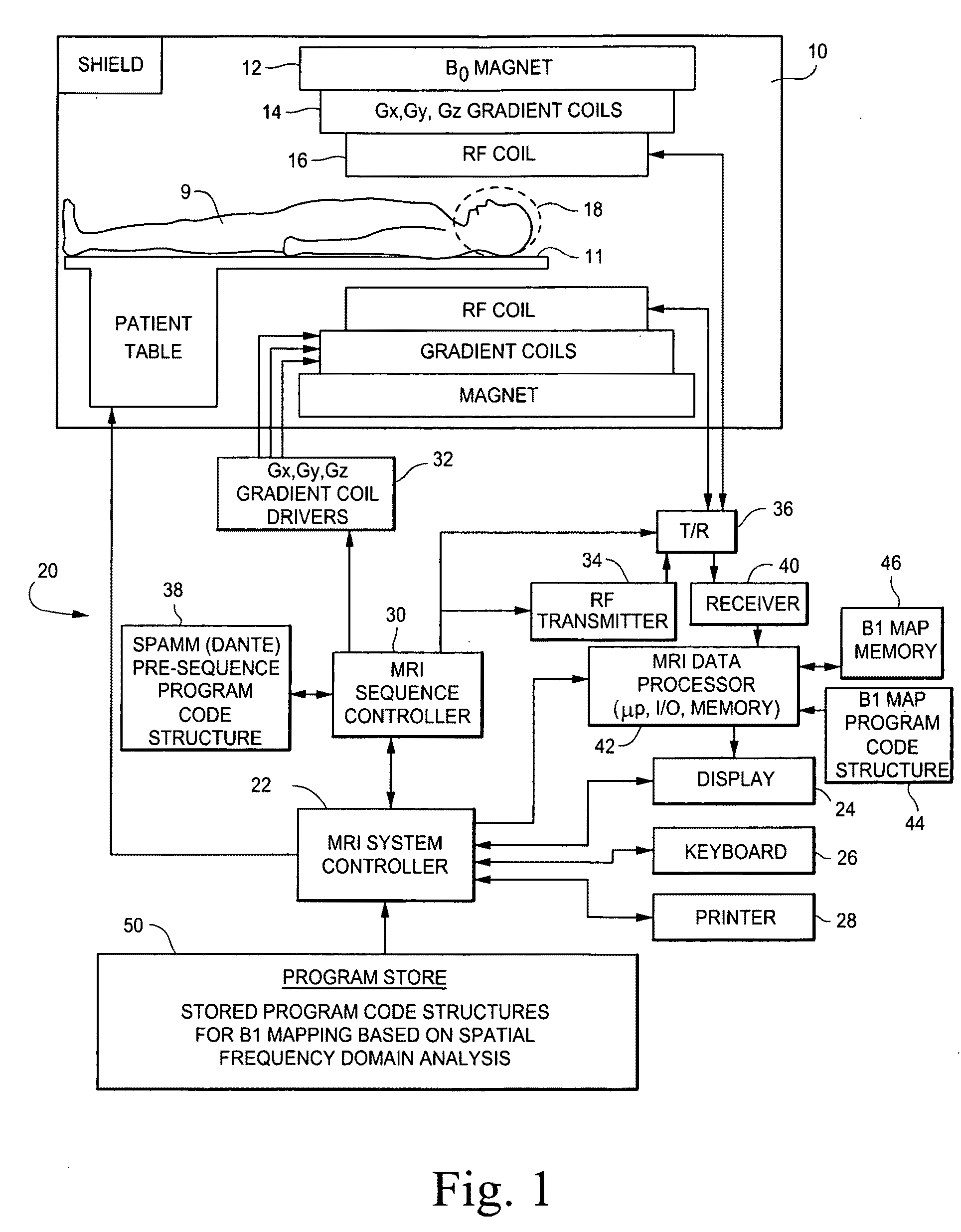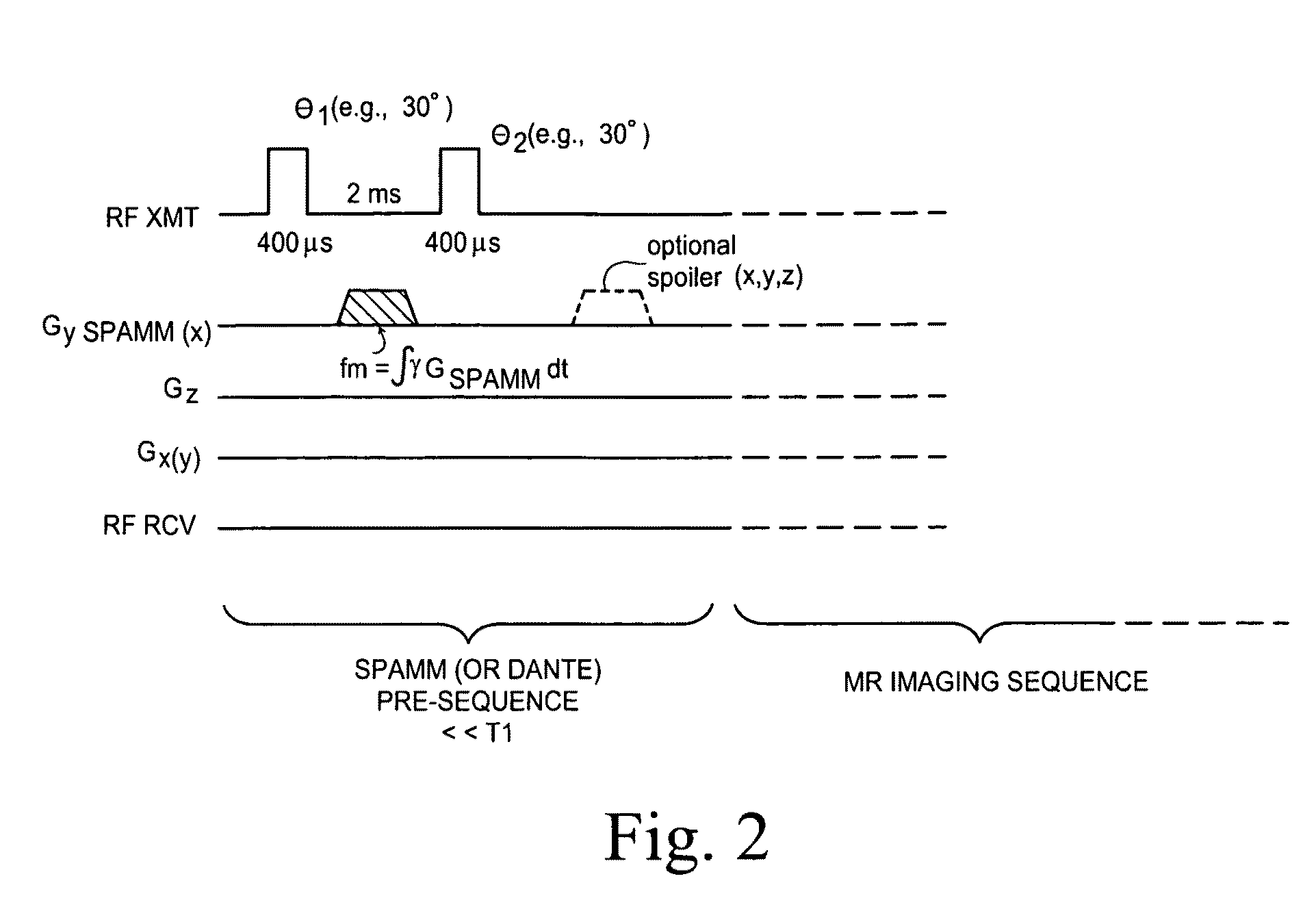B1 mapping in MRI system using k-space spatial frequency domain filtering
a spatial frequency domain and mapping technology, applied in the field of generating multidimensional maps of the spatial distribution of radio frequency magnetic fields, can solve the problems of introducing unwanted effects of rf fields, inability to achieve absolutely uniform homogeneity, and inability to achieve absolute linear gradients, etc., to achieve a higher resolution b1 map
- Summary
- Abstract
- Description
- Claims
- Application Information
AI Technical Summary
Benefits of technology
Problems solved by technology
Method used
Image
Examples
Embodiment Construction
[0106]The MRI system shown in FIG. 1 includes a gantry 10 (shown in schematic cross-section) and various related system components 20 interfaced therewith. At least the gantry 10 is typically located in a shielded room. One MRI system geometry depicted in FIG. 1 includes a substantially coaxial cylindrical arrangement of the static field B0 magnet 12, a Gx, Gy and Gz gradient coil set 14 and an RF coil assembly 16. Along the horizontal axis of this cylindrical array of elements is an imaging volume 18 shown as substantially encompassing the head of a patient 9 supported by a patient table 11.
[0107]An MRI system controller 22 has input / output ports connected to display 24, keyboard 26 and printer 28. As will be appreciated, the display 24 may be of the touch-screen variety so that it provides control inputs as well.
[0108]The MRI system controller 22 interfaces with MRI sequence controller 30 which, in turn, controls the Gx, Gy and Gz gradient coil drivers 32, as well as the RF transm...
PUM
 Login to View More
Login to View More Abstract
Description
Claims
Application Information
 Login to View More
Login to View More - R&D
- Intellectual Property
- Life Sciences
- Materials
- Tech Scout
- Unparalleled Data Quality
- Higher Quality Content
- 60% Fewer Hallucinations
Browse by: Latest US Patents, China's latest patents, Technical Efficacy Thesaurus, Application Domain, Technology Topic, Popular Technical Reports.
© 2025 PatSnap. All rights reserved.Legal|Privacy policy|Modern Slavery Act Transparency Statement|Sitemap|About US| Contact US: help@patsnap.com



